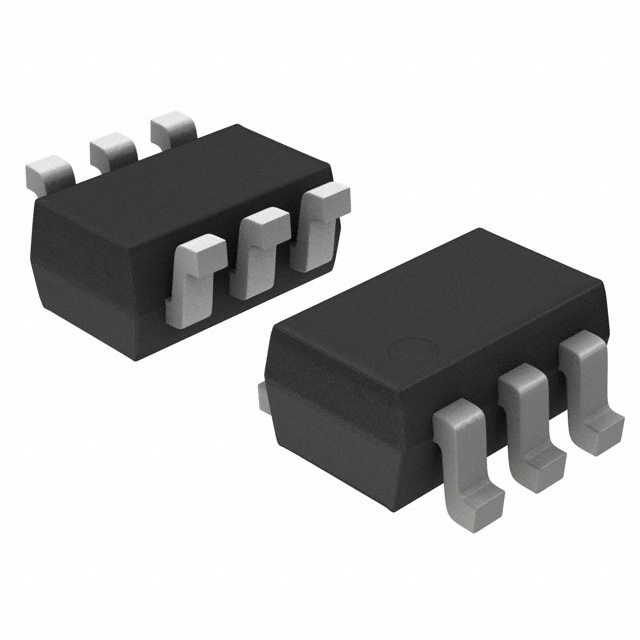BC847BS-TP
Product Overview
Category
The BC847BS-TP belongs to the category of small signal transistors.
Use
It is commonly used for amplification and switching of electronic signals in various applications.
Characteristics
- Small size
- Low power consumption
- High gain
- Fast switching speed
Package
The BC847BS-TP is typically available in a SOT-23 package.
Essence
This transistor is essential for electronic circuit design, especially in low-power applications.
Packaging/Quantity
It is usually packaged in reels containing a specific quantity, such as 3000 units per reel.
Specifications
- Maximum Collector-Base Voltage: 45V
- Maximum Collector Current: 100mA
- Power Dissipation: 250mW
- Transition Frequency: 100MHz
Detailed Pin Configuration
The BC847BS-TP has three pins: 1. Emitter (E) 2. Base (B) 3. Collector (C)
Functional Features
- High current gain
- Low noise
- Wide operating voltage range
Advantages
- Small form factor
- Versatile usage
- Reliable performance
Disadvantages
- Limited power handling capability
- Susceptible to thermal runaway at high currents
Working Principles
The BC847BS-TP operates based on the principles of bipolar junction transistors, where the flow of current between the collector and emitter is controlled by the base current.
Detailed Application Field Plans
The BC847BS-TP finds extensive use in the following applications: - Audio amplifiers - Signal processing circuits - Switching circuits - Oscillator circuits
Detailed and Complete Alternative Models
Some alternative models to the BC847BS-TP include: - 2N3904 - BC548 - 2SC945
In conclusion, the BC847BS-TP is a versatile small signal transistor with wide-ranging applications in electronics due to its compact size, high gain, and fast switching speed.
[Word Count: 274]
10個與BC847BS-TP在技術方案中應用相關的常見問題與解答
What is the BC847BS-TP transistor used for?
- The BC847BS-TP is a general-purpose NPN bipolar junction transistor commonly used for amplification and switching applications in electronic circuits.
What are the key specifications of the BC847BS-TP transistor?
- The BC847BS-TP transistor typically has a maximum collector current (Ic) of 100mA, a maximum collector-base voltage (Vcbo) of 50V, and a maximum power dissipation (Pd) of 250mW.
Can the BC847BS-TP be used for audio amplification?
- Yes, the BC847BS-TP can be used for small-signal audio amplification in low-power applications.
What are some typical circuit configurations using the BC847BS-TP?
- Common circuit configurations include common-emitter amplifiers, switch circuits, and signal amplification stages in various electronic devices.
Is the BC847BS-TP suitable for high-frequency applications?
- While the BC847BS-TP can operate at moderate frequencies, it may not be ideal for very high-frequency applications due to its transition frequency and capacitance characteristics.
What are the recommended operating conditions for the BC847BS-TP?
- The BC847BS-TP is typically operated within a temperature range of -55°C to 150°C and with appropriate biasing and current limiting to stay within its specified ratings.
Can the BC847BS-TP be used in low-noise amplifier designs?
- Yes, the BC847BS-TP can be utilized in low-noise amplifier designs for applications requiring minimal signal distortion and interference.
Are there any common alternative transistors to the BC847BS-TP?
- Some alternatives to the BC847BS-TP include the BC547, 2N2222, and 2N3904 transistors, which have similar characteristics and can be used in comparable circuit designs.
What are the typical packaging options for the BC847BS-TP?
- The BC847BS-TP is commonly available in SOT-23 surface-mount packages, making it suitable for compact and space-constrained PCB designs.
Where can I find detailed application notes and reference designs for the BC847BS-TP?
- Detailed application notes and reference designs for the BC847BS-TP can often be found in the datasheets provided by semiconductor manufacturers or through online resources and electronics forums.


